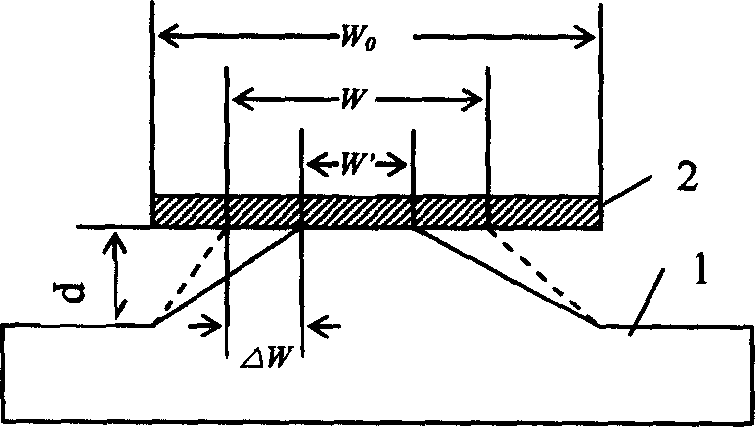Manufacturing process of MEMS impression template based on wet etching
A wet etching and manufacturing process technology, which is applied in the photoengraving process of pattern surface, photoengraving process coating equipment, semiconductor/solid-state device manufacturing, etc., can solve the problem of short etching resistance time and long metal layer deposition time. , etching and other problems, to improve the quality of the etched surface, eliminate surface defects, and reduce the undercut rate.
- Summary
- Abstract
- Description
- Claims
- Application Information
AI Technical Summary
Problems solved by technology
Method used
Image
Examples
Embodiment Construction
[0023] figure 1 For overall process flow diagram of the present invention, comprise the following steps:
[0024] Glass cleaning process ( figure 1 a) is: first wipe the glass with acetone, then rinse it with distilled water, soak the rinsed glass in concentrated sulfuric acid for 10 minutes; take it out, rinse it with distilled water, and dry it at 100°C for 10 minutes to remove the dirt on the glass ; Thorough cleaning can greatly reduce the etching defects caused by glass surface contamination.
[0025] After cleaning, adopt the mode of vapor deposition to carry out the spreading of silane coupling agent ( figure 1 b) The type of coupling agent used is KH-570. The coupling agent is used to improve the bonding force between photoresist and glass. The process of evaporating the coupling agent is: the temperature is 80°C, and the evaporation time is 30min , post-treatment after evaporation, the post-treatment method is to bake at 120 ° C for 40 minutes.
[0026] Next, glue...
PUM
| Property | Measurement | Unit |
|---|---|---|
| thickness | aaaaa | aaaaa |
| thickness | aaaaa | aaaaa |
| height | aaaaa | aaaaa |
Abstract
Description
Claims
Application Information
 Login to View More
Login to View More - R&D
- Intellectual Property
- Life Sciences
- Materials
- Tech Scout
- Unparalleled Data Quality
- Higher Quality Content
- 60% Fewer Hallucinations
Browse by: Latest US Patents, China's latest patents, Technical Efficacy Thesaurus, Application Domain, Technology Topic, Popular Technical Reports.
© 2025 PatSnap. All rights reserved.Legal|Privacy policy|Modern Slavery Act Transparency Statement|Sitemap|About US| Contact US: help@patsnap.com



